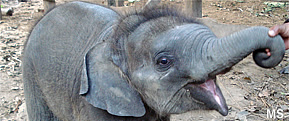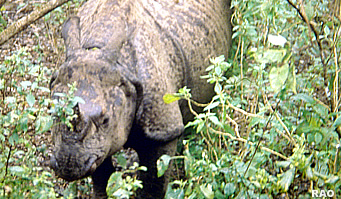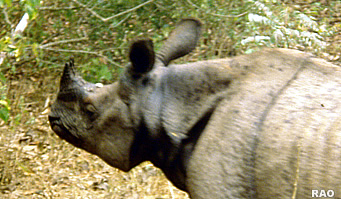 |
Nepal National Parks Chitwan |
|
 |
|
Greater one-horned rhino - Rhinoceros unicornis
|

|
 |
 Today, only five species of rhino survive. These five species are further divided into 11 identified subspecies. All rhinos are under threat of, and all but one species is on the verge of, extinction. Without drastic action, some rhinos could be extinct in the wild within the next 10-20 years.Only about 19,000 of these marvelous creatures survive in the wild with another 1,200 in captivity. Today, only five species of rhino survive. These five species are further divided into 11 identified subspecies. All rhinos are under threat of, and all but one species is on the verge of, extinction. Without drastic action, some rhinos could be extinct in the wild within the next 10-20 years.Only about 19,000 of these marvelous creatures survive in the wild with another 1,200 in captivity.
|
Of these rhinos, almost two-thirds are white rhinos. There are only around 6,500 of the other four species combined.
- White rhino (Ceratotherium simum)
- Black rhino (diceros bicornis)
- Greater one-horned rhino (Rhinoceros unicornis)
- Sumatran Rhino (Dicerorhinus sumatrensis)
- Javan Rhino (Rhinoceros sondaicus)
Data from the three-week National Rhino Census in Nepal shows that the population of the greater one horned rhinoceros (Rhinoceros Unicornis) has increased.
In 2010 there were 534 rhinos in Nepal, marking an increase of 99 rhinos from the 435 recorded in the last census in 2008, according to the census results.
However, poaching has remained high and the success is precarious without continued and increased support for conservation efforts in India and Nepal.
The species derives its name from its single large horn. The skin of this rhino also sets them apart. The greater one-horned rhino is brownish-gray, hairless and has folds of skin that resemble plates of armor with rivets.
|
Links
|
 |
 |
 |
External
links |
|




